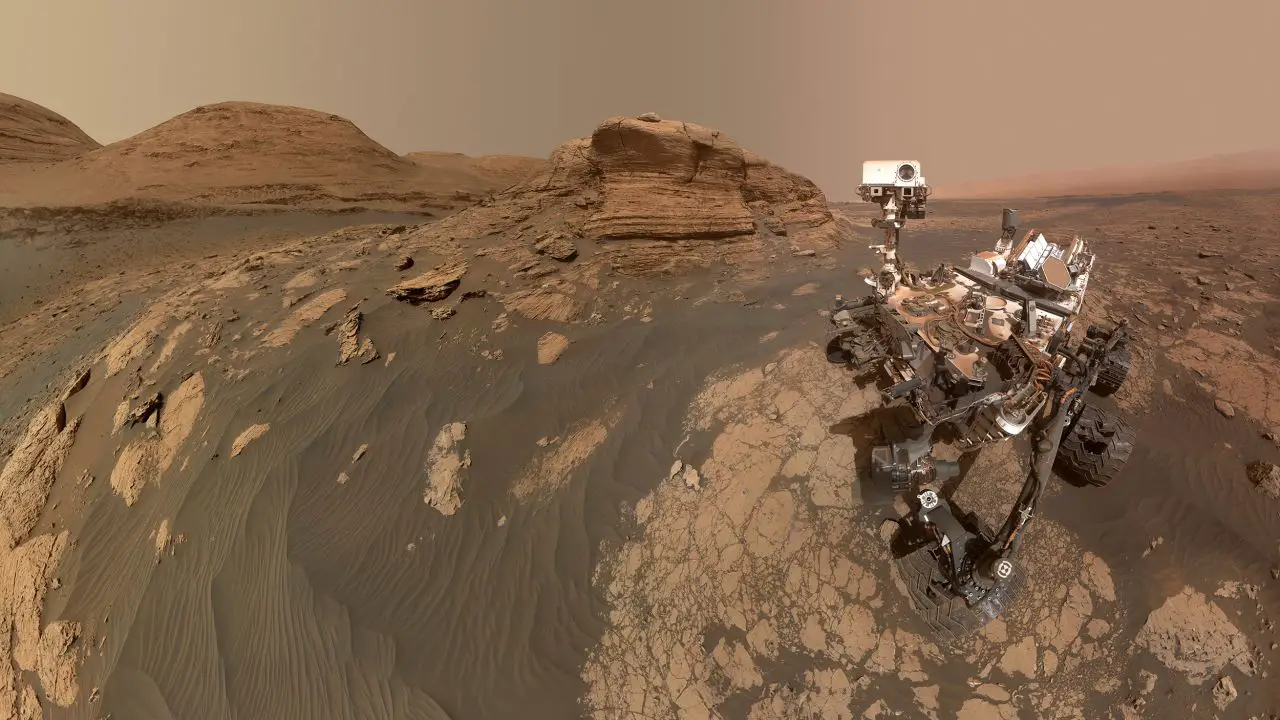The rover has been looking for traces of ancient microbial life on Mars for nine years. It first touched down in 2012 and has been studying the planet’s environment and geology ever since.
Hundreds of thousands of amazing photographs of the sky and the ground have been taken by Curiosity. It revealed the secrets of Mars and even discovered organic salts.
The rover has now returned photographs of an unusual object that resembles a delicate flower emerging out of the ground.
Curiosity snapped a close-up photo of Mars’ surface with its Mars Hand Lens Imager (MAHLI) sensor at the end of its robotic arm, displaying what scientists describe as “diagenetic crystal clusters.”
They are made up of three-dimensional crystal clusters that originated when sedimentary rock was eroded and “cemented” by mineral-rich groundwater. This is not the first time Curiosity has stumbled onto something similar.
In 2013, the machine came upon a cluster of sand grains that looked like flowers.
However, they were considerably smaller (between 1 and 2 mm/ 0.04 and 0.08 in). The clusters that the rover just discovered are 1 centimeter in diameter (0.3 in). While it seems to be merely a photograph, it is really a composite of numerous photos.
The MAHLI instrument created the image we see by combining two to eight photos using an onboard focusing process, which is a method of creating a composite of photographs of the same subject taken at different focus positions in order to bring as many details into focus as possible in a single image.
The end result is a photograph that vividly catches the features of this little, delicate-looking object. Even if it is not a real flower, these results indicate that Mars previously had liquid water running across its surface.
According to prior studies of similar structures discovered on Mars (you can read a study about them here), the feature was originally embedded inside a rock that eroded away over time. These mineral clusters, on the other hand, seem to be impervious to erosion.
You may remember the word concretion from the Opportunity rover mission, which observed characteristics that were termed ‘blueberries’ because of their tiny size and spherical shape. In this view, you can notice circular concretions close to the flower-like feature.
This feature was discovered earlier this week by the rover scientific team and given the name ‘Blackthorn Salt.’ These close-up photographs were taken with the rover’s Mars Hand Lens Imager, or MAHLI.
The rover’s counterpart of the magnifying hand lens that geologists often bring into the field is this camera. The minerals and textures in rock surfaces are shown in MAHLI’s close-up photos. The researchers said that they are doing more research on this item using various scientific tools.

